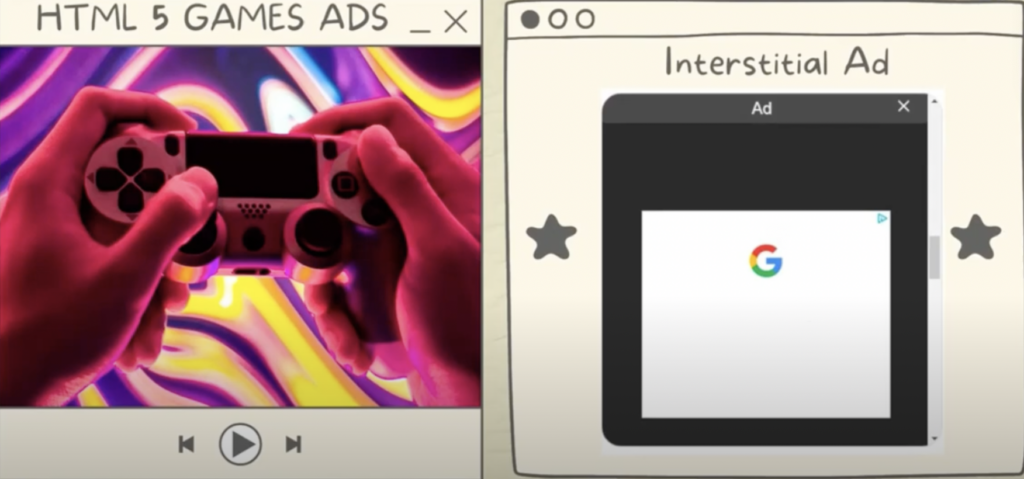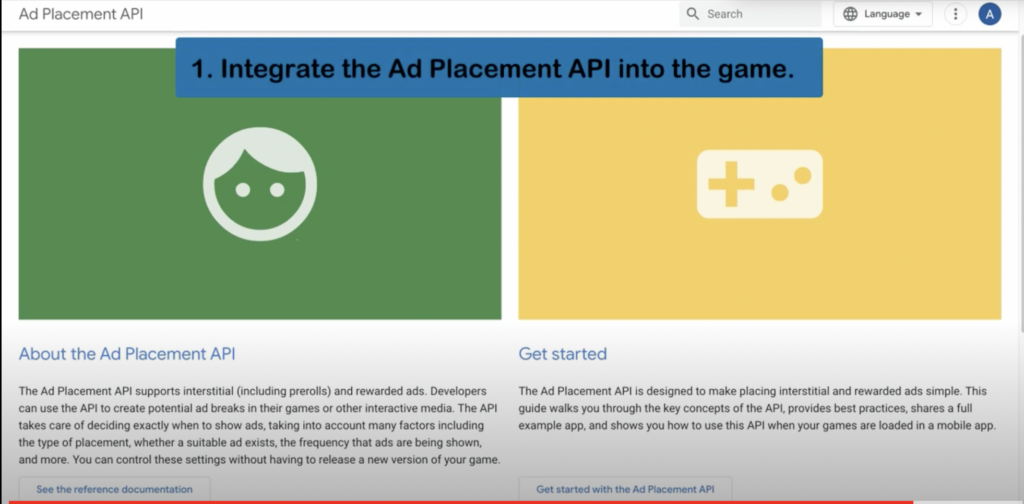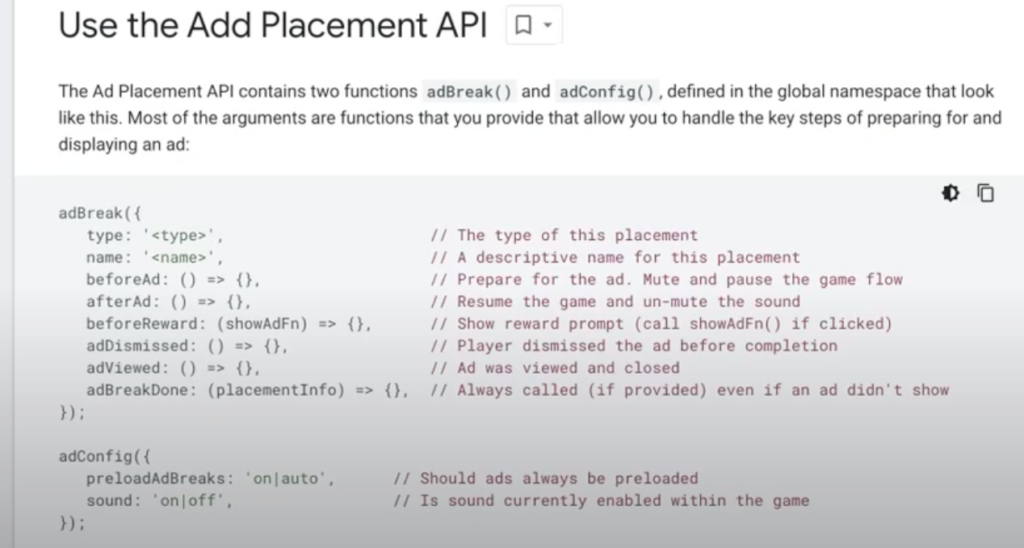HTML5 or H5 games are not only fun, but they’re also profitable. For game developers, the rising popularity of H5 games is an opportunity to grow their revenue streams and reach new audiences; for non-gaming publishers, it’s an unobtrusive and effective way to attract new readers and increase engagement with existing ones.
The BETA version is set to change how publishers monetize their websites and reap bigger profits from their ad revenue. The ascent of H5 games has also been fueled by recent advancements in H5 gaming technology, which have made these games easier to create and integrate across platforms, and their gameplay as immersive as that of gaming apps.
The global H5 games market is projected to grow significantly to an estimated $3.09 billion by 2028, reflecting an average annual growth rate of around 10% during this period. This growth indicates a shift in the industry towards greater maturity and competitiveness, with new entrants continuously entering the market and established players striving to broaden their user bases.
The increasing accessibility of H5 games, which can be played on any device without the need for downloads, has contributed to their rising popularity. As the market evolves, game developers are leveraging advancements in H5 gaming technology, making it easier to create and integrate these games across platforms. This trend is expected to continue as the demand for engaging, interactive content grows.
Video ads are some of the most lucrative and highest-paying ads around, so any opportunity to monetize casual games with videos should be met with open arms by publishers.
Whether your game is a viral hit like Angry Birds or you have a handful of less-popular games, gaming publishers will soon be on the same page as video publishers are. The ability to monetize online games with videos means that casual gaming may have just gotten way more lucrative.
Key differences between HTML5 games and traditional mobile apps
HTML5 games are designed for easy access and quick deployment across various platforms. Their development is generally faster and less costly, appealing particularly to casual gamers. However, they may lack the performance and user experience that dedicated mobile apps provide.
Traditional Mobile Apps offer a richer user experience and better performance by leveraging device-specific features. They are preferred for more complex applications and games that require high levels of interactivity and functionality.
Here’s a comparison of the key differences between HTML5 games and traditional mobile apps based on the provided search results:
| Feature | HTML5 Games | Traditional Mobile Apps |
|---|---|---|
| Platform Compatibility | Cross-platform; runs on any device with a web browser | Platform-specific; developed for iOS or Android |
| Development Time | Faster development (often under a week) | Longer development cycles, often requiring more resources |
| Installation Requirements | No installation needed; played directly in browsers | Requires installation from app stores |
| Performance | Generally slower due to browser limitations | Typically faster and more responsive, utilizing device hardware |
| User Experience (UX) | Limited UX capabilities; may not fully utilize device features | Richer UX with access to native functionalities (camera, GPS) |
| Monetization Strategies | In-game ads, microtransactions | In-app purchases, subscriptions, ads |
| Updates and Maintenance | Easy updates; changes can be deployed without user action | Manual updates required through app stores |
| Offline Access | Generally requires an internet connection | Can function offline once downloaded |
| Target Audience | Casual gamers and broader demographics | Serious gamers and niche markets |
| Access to Device Features | Limited access to device features (e.g., camera, GPS) | Full access to device capabilities |
| Market Reach | Accessible to a wider audience due to no download barriers | Limited to users who download the app |
Your game can leverage H5 games to grow bottom lines

H5 games are a breakthrough when it comes to growing your ad revenue streams through game monetization and affordable development costs. Since these games are web-based, there’s no need for app publishing tools, further bringing down the development cost.
H5 games are bite-sized and not feature-heavy when compared to dedicated gaming apps. They can be published in less than 5 days as they require fewer resources & development lead time. This is how H5 games publishers unlock more revenue streams faster with the shortened build time. Many publishers have incorporated the H5 game Ad Placement API in their games allowing their users to interact easily with interstitial ads, rewarded ads, and playable ads thus increasing user engagement and retention.
H5 games ads have proven to improve game retention with user session times increasing 2X and ad revenue improving by 3X. Publishers can distribute their H5 games with third-party publishers via AdSense for Platform and make use of the revenue-sharing feature. You’ll directly receive ad revenue payments once third-party publishers use your H5 games for in-game advertising.

H5 games help non-gaming publishers with user retention & engagement
If you’re a non-gaming publisher, you can make use of the H5 game’s dynamic gameplay to take your content & user engagement to the next level.
You don’t need to be a game developer to leverage H5 games ads. If you want to get into gaming later, you can collaborate with third-party game content providers to integrate HTML5 games on your platform or build your desired game.
Start running game ads
First, publishers that run ads on their games must adhere to all video-specific usage policies and ad exchange policies as though they were running regular ol’ video ads.
Game publishers must also adhere to the following guidelines:
- The game must be family safe.
- The requested ad must play your game.
- You have to own monetization rights for the game or have explicit, written permission from the owner to monetize the game.
Which Ads can I run?
For publishers looking to run ads within their H5 games, adherence to video-specific usage policies and ad exchange regulations is crucial. Key guidelines include ensuring the game is family-safe, obtaining monetization rights, and ensuring that requested ads align with gameplay experiences.
The ads supported in your game are highly diverse. You can play the following video ads before your game:
- Standard video: This video plays for a fixed duration and cannot be skipped.
- VPAID (or Video Player-Ad Interface Definition): This industry-standard protocol has interactive functionality for advanced video ads.
- TrueView video: This format is a proprietary Google video ad; after a certain length of time, the user can skip the ad.
Learn more about VAST and VPAID here: https://www.monetizemore.com/blog/vast-vs-vpaid/
HTML5 Games Ads: The Good, The Bad, The Ugly
Advantages
- No Download Required: Users can access H5 games directly through their web browsers without needing to download or install any software. This server-side updating means players always have the latest version without manual updates.
- Cross-Device Compatibility: H5 games are designed to be played on any device, from desktops to smartphones, enhancing accessibility and broadening the potential audience.
- Easy Implementation: Developers can quickly integrate H5 games into existing platforms, making it a straightforward option for monetization without extensive technical expertise.
- Low Barriers to Entry: The lack of installation requirements allows for immediate engagement, making it easier for users to try out new games.
Disadvantages
- Lower Frame Rate Performance: H5 games may experience lower frame rates compared to native applications, which can affect the overall gaming experience, particularly for graphics-intensive games.
- Limited Memory Access: Unlike native apps, H5 games have restrictions on shared memory access, which can limit performance and functionality.
- In-App Purchase Limitations: H5 games typically do not support in-app purchases unless developed using specific open-source platforms like Cordova, which can restrict monetization options.
- Ad Fatigue Risk: Frequent exposure to ads, especially if poorly timed or overly intrusive, can lead to user fatigue and negatively impact player retention.
HTML5 Games Alternatives
Here’s a list of alternatives to HTML5 games, highlighting various gaming formats and their characteristics:
| Alternative | Description | Key Features |
|---|---|---|
| Native Mobile Games | Games specifically developed for mobile platforms (iOS, Android) | High-quality graphics, in-app purchases, offline play |
| PC and Console Games | Traditional games played on PCs or gaming consoles | Complex mechanics, immersive experiences, extensive content |
| Browser-Based Flash Games | Older web games that require Flash Player (now largely deprecated) | Simple mechanics, easy access, but limited support |
| Tabletop Games | Physical board games played in person | Social interaction, tactile experience, no screen fatigue |
| Augmented Reality Games | Games that blend digital elements with the real world (e.g., Pokémon Go) | Interactive gameplay, encourages physical activity |
| Social Media Games | Casual games played within social media platforms (e.g., Facebook games) | Easy to share with friends, often free-to-play |
| Streaming Games | Games played via cloud gaming services (e.g., Google Stadia, Xbox Cloud Gaming) | Access to high-end games without powerful hardware |
| VR Games | Immersive games played using virtual reality headsets | Highly engaging experiences, requires VR hardware |
Insights
- Native Mobile Games: These are highly popular due to their advanced graphics and gameplay mechanics. They often include monetization strategies such as in-app purchases and subscriptions.
- PC and Console Games: These platforms offer deep gaming experiences with extensive storylines and graphics but usually require a higher investment in hardware.
- Tabletop Games: With a resurgence in interest, tabletop games provide a social experience that digital formats cannot replicate. They are appealing for those seeking a break from screens.
- Augmented Reality Games: These games leverage real-world environments to create unique gameplay experiences, encouraging players to explore their surroundings.
- Streaming Games: Cloud gaming is gaining traction as it allows players to access high-quality games without needing expensive hardware.
These alternatives illustrate the diverse gaming landscape available today, each catering to different preferences and playing styles.
The recent BETA Release
H5 gaming websites have gained significant traction as a niche over the years. In line with this, AdSense has released the BETA release of HTML5 or H5 games ads. Publishers running H5 gaming sites that use AdSense have an opportunity to expand monetization by serving two highly effective ad formats in the HTML 5 games.
The first one is the interstitial ad. These full-screen ads are displayed at natural breaks in between levels where users can either click on the ad or return to the game.
Rewarded ads are another H5 games ads variant where users interact with the ad in exchange for in-game rewards like extra lives to continue playing the game. Compared to other rewarded ad networks, MonetizeMore’s Pubguru Header Bidding technology gets you the highest RPMs and video ad fill rates. Our revenue share policy lets you keep the majority of the revenue. Our rewarded video ad platform is available for WordPress sites, H5, iOS, & Android games.
Sign up here to participate in the beta H5 Games Ads test. Once you fill out the interest form, publishers will also release updates and be alerted when H5 games ads become generally available.
Aside from the high-performing ad formats, H5 games ads offer:
1- Simplicity

These ads use the AdSense code so publishers are able to use the same ad unit code that’s also used for content ads. The IMA SDK is also replaced with a new H5 Games Ad Placement API.
The H5 games ad placement API is supposed to be simpler to use and less prone to errors as it uses a simple JavaScript object to describe ad placements and offers simple controls to adjust the frequency of ads.
2- Cross-platform support

H5 games ads also support the ability to embed HTML5 games directly into a webpage as well as iframing the game into a different site. If you have an app, H5 Games ads also support app integration with Google AdMob so the games can be monetized with app ads when the HTML5 game is hosted in the webview of the mobile app. This is currently supported in Android. So, with just one API, websites, webpages, and app webviews can all show ads and make money through AdSense.
1- To start displaying H5 Games Ads, publishers must integrate the ad placement API into the game.
2- If the game is hosted in a mobile app, set up an AdMob account if you haven’t yet for optimal user experience and performance.
3- Lastly, just add the AdSense code to your HTML5 game page and you’re good to go.
Level up with MonetizeMore: The Best Game Monetization Solution
HTML5 games offer a tonne of benefits, including faster development, distribution, and the capacity to play across all devices. Finding the best game monetization option is simpler now with the advent of rewarded ads that benefit both the publisher and the user.
As the popularity of H5 gaming continues to rise, so too will the opportunity for developers to drive new traffic and generate additional revenue through these ads.
source https://www.monetizemore.com/blog/game-monetize-online-games/



0 Comments